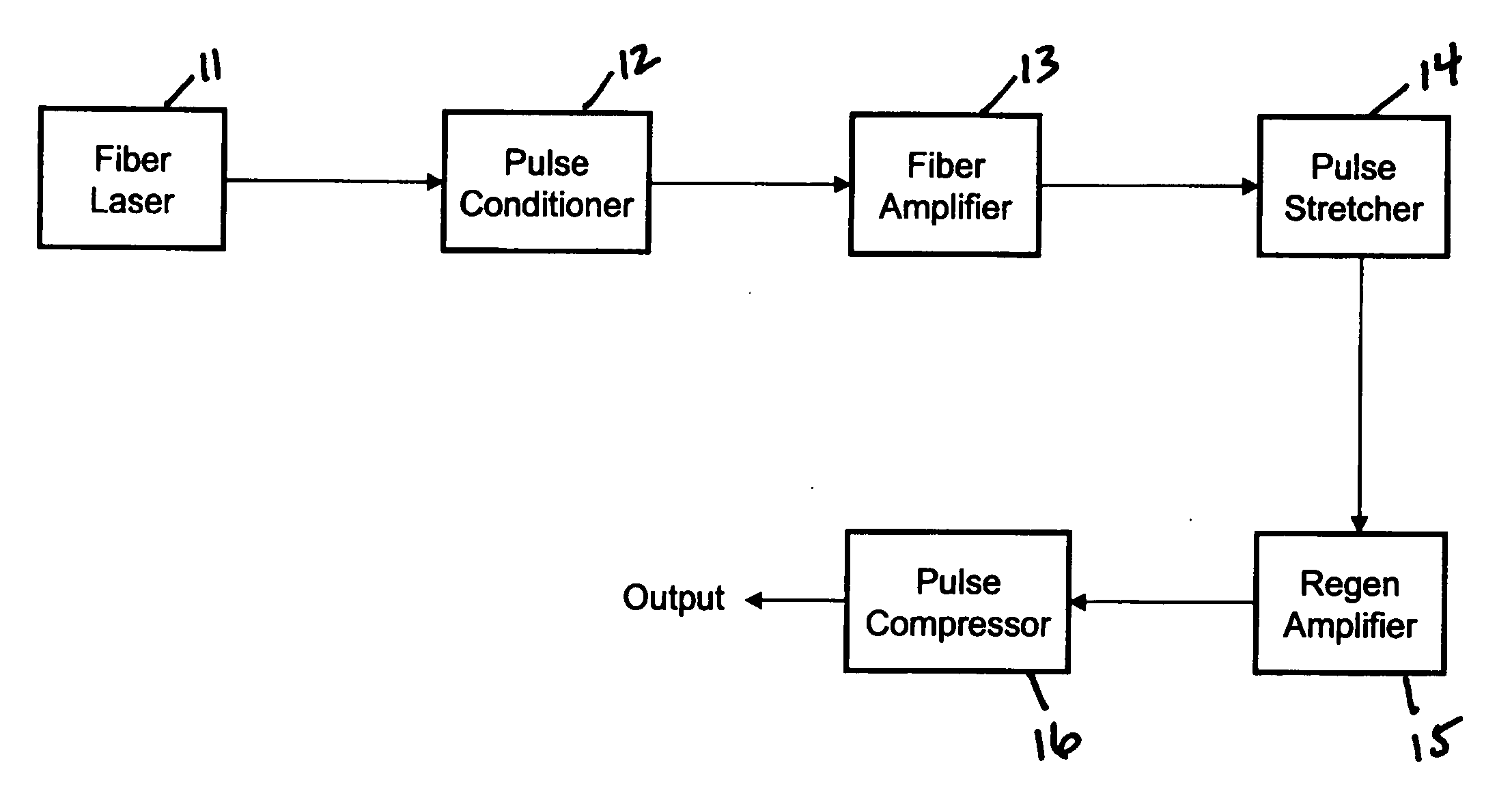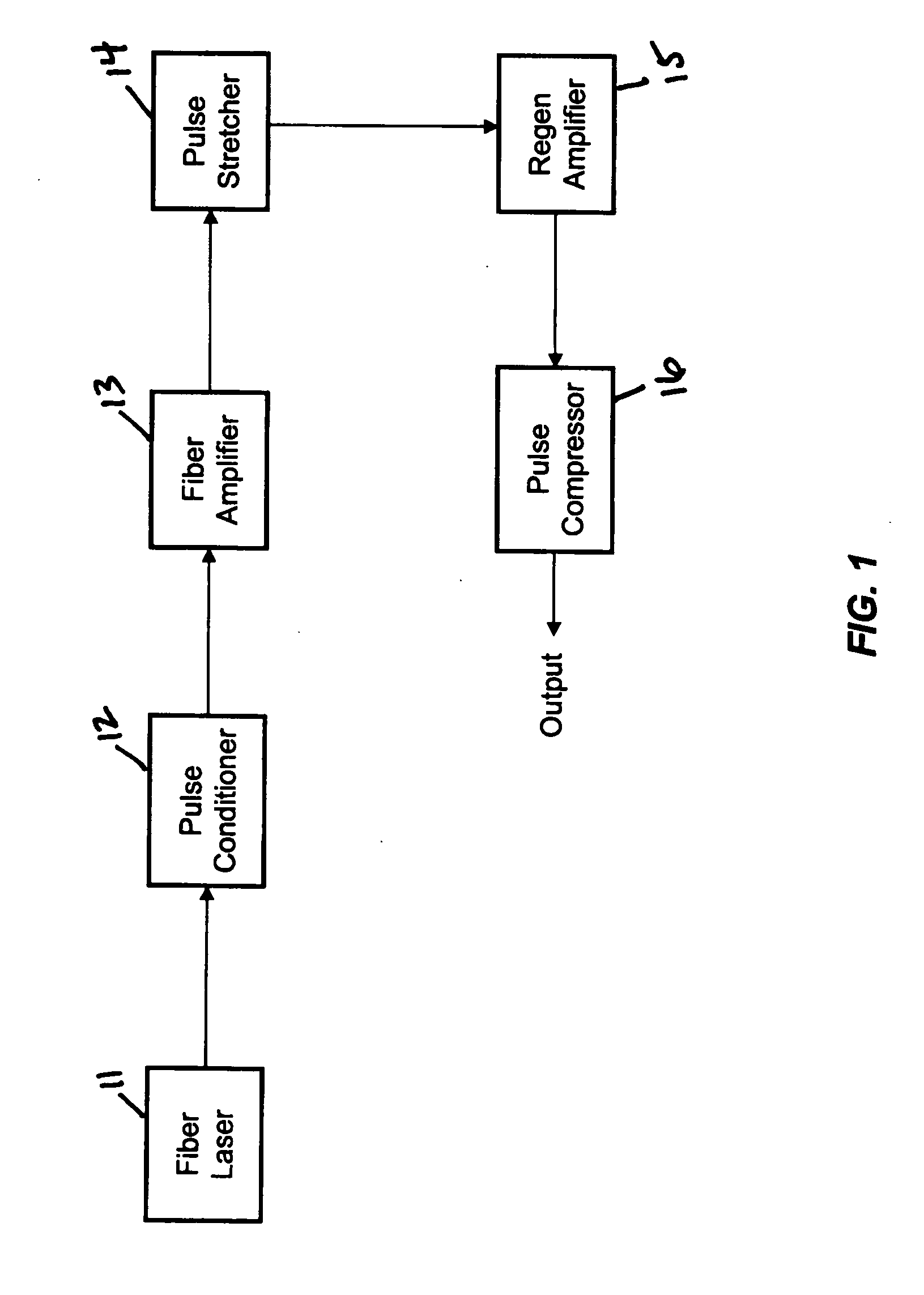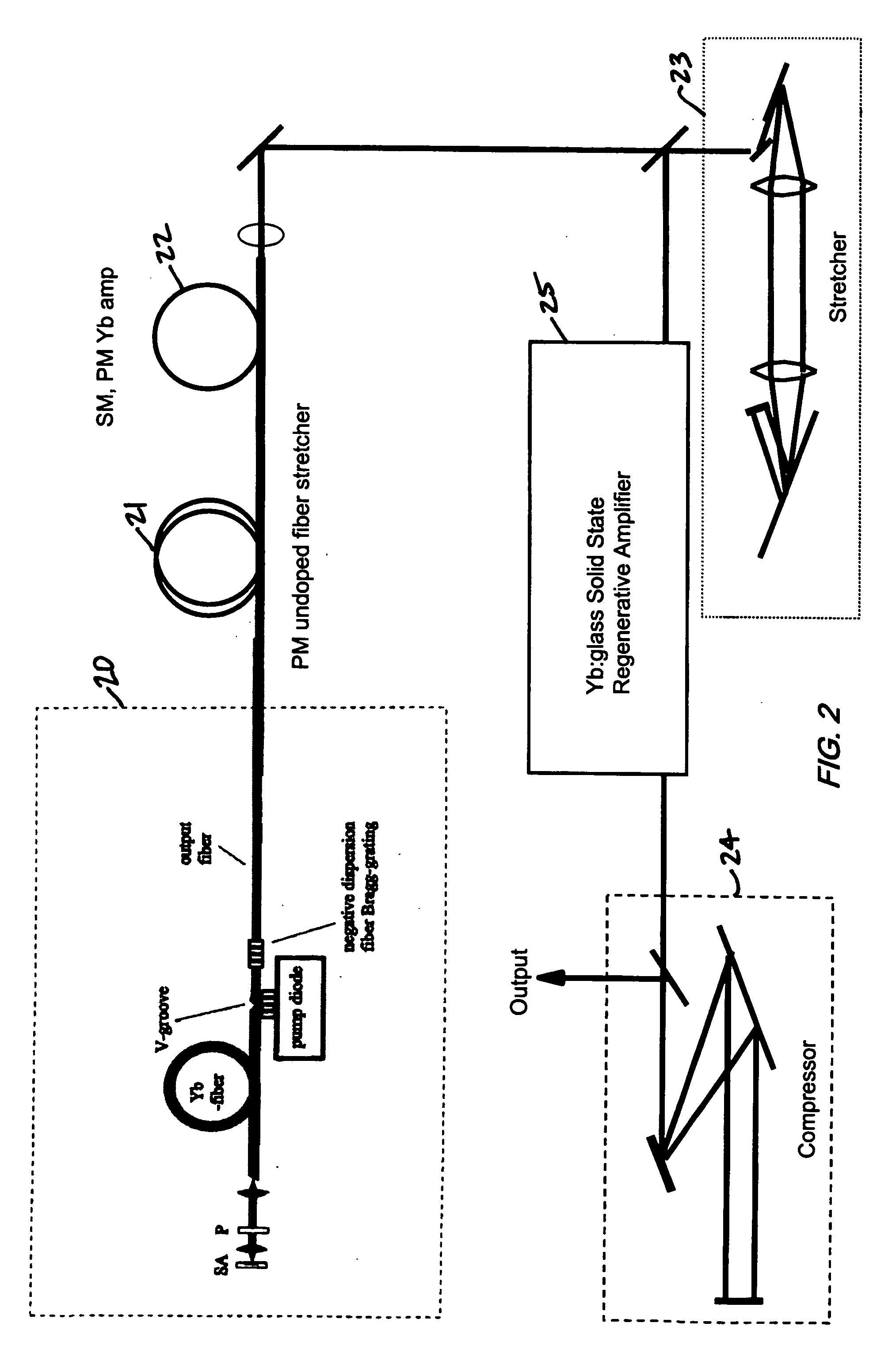[0020] As mentioned earlier, Yb: sources do not have stable spectral performance. The central
wavelength changes with changes in
pulse energy or extra loss in the cavity with time.
Wavelength shifts due to additional losses cannot be corrected by increasing the pump level. Additional losses due to dirty intracavity
optics or mirrors or misalignment are not
wavelength dependent but additional
gain from higher excitation modifies the spectral gain profile of the
regenerative amplifier. There are a number of different means to control the spectral output of the regenerative
amplifier directly, such as an intracavity tuning element. However, these elements will narrow the spectral output and broaden the temporal pulse output. The present invention is directed to spectral control of the seed source.
[0027] Fortunately, there are methods for mitigating this affect. One is to use larger gratings that allow some changes in the central wavelength. Another is to use no
pulse compression or CPA as is described for the
thin disc regenerative
amplifier in M. H. Niemz, A. Kasenbacher, M. Strassl, A. Backer, A. Beyertt, D.
Nickel and A. Giesen, Tooth
Ablation Using a CPA-Free Thin Disk
Femtosecond Laser System, Applied
Physics B-Lasers and
Optics 79 (3): 269-271, August 2004. However, the gain shift can be large enough to move the seed out of the gain profile or to reshape the spectrum of the seed and affect the temporal pulse shape and
pulse duration. This can be best understood by looking at the gain profiles of Yb:glass for different pumping rates as shown in FIG. 2 from C. Honninger, R. Paschotta, M. Graf, F. Morier-Genoud, G. Zhang, M. Moser, S. Biswal, J. Nees, A. Braun, G. A. Mourou, I. Johannsen, A. Giesen, W. Seeber and U. Keller, Ultrafast
Ytterbium-Doped Bulk Lasers and
Laser Amplifiers, Applied
Physics B-Lasers And
Optics 69 (1): 3-17, Jul. 1999. If the seed is around 1.05 micrometers with 2.5% excitation level and the gain needs to be increased to the 5% excitation level, then part of the spectrum of the seed will go from having no gain to being at the peak gain of the regenerative amplifier. Injection to the blue part of the gain profile will see the most change in spectral reshaping. However, if the seed is at 1.08
micrometer and the loss is increased by 0.03 uniformly with wavelength, then no amount of pumping will give net gain at that wavelength. This part of the spectrum moves outside the
spectral window with gain. A more likely
scenario is that the seed would be at a wavelength near 1.05 micrometers. As gain is increased in the regenerative amplifier, to mitigate loss, the gain slope will increase and the spectral shifting will be increased. To maintain the output wavelength, two solutions are proposed. One solution is to increase the seed input energy, since the amount of shift depends on the overall gain, and the overall gain can be decreased by increasing the input. The other solution is to
red shift the seed so that the overall shift does increase, but the wavelength of the output remains the same.
[0029] An additional improvement for these lasers that is not possible with
solid-state oscillators is that the repetition rate can be lowered to match the repetition rate of the regenerative amplifier while significantly increasing the
pulse energy from the fiber amplifier. The lower repetition rate reduces the tolerances on the Pöckels
cell switch in the regenerative amplifier. With 50-100 megahertz sources, the Pöckels
cell needs near 100% discrimination to prevent two pulses from being injected and amplified. If the repetition rate of the fiber amplifier is equal to the repetition rate of the regenerative amplifier, there is no need for discrimination between pulses and there just needs to be sufficient loss to hold off spontaneous lasing of the regenerative amplifier. The
single pass gain is 5-30%, so this is the loss needed. Higher seed energies are also desired to reduce gain narrowing in the regenerative amplifier. Higher pulse energies also increase the stability of a
low gain regenerative amplifier. It is not necessary to match the repetition rates of the injection seed and the regenerative amplifier. However, it will give the highest injection
pulse energy. There may be reasons for minimizing the pulse energy in the fiber amplifier. The AOM will only be beneficial if the pulse that normally precedes the pulse injected into the regenerative amplifier is blocked by the AOM.
 Login to View More
Login to View More  Login to View More
Login to View More 


